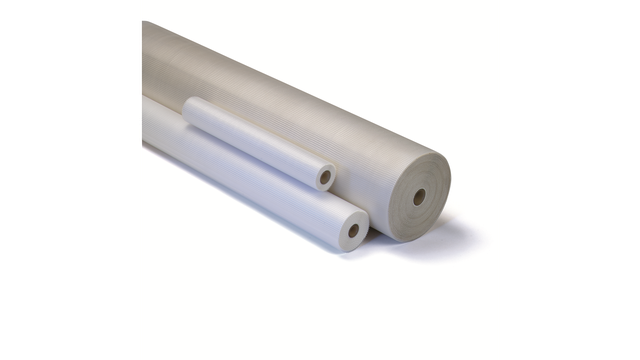Membrana spiralna NF
The nanofiltration spiral membranes from Alfa Laval are based on a unique construction of polyester support material in a sanitary full-fit design that provides optimum cleaning conditions. The spiral membranes are available with different nanofiltration membrane types and in different combinations of length, diameter and feed spacer size
Alfa Laval nanofiltration (NF) spiral membranes use membranes with pores that are very small - down to 300 daltons. Operating at pressures of up to 50 bar, small ions pass through, whereas larger ions and most organic components are retained.
Alfa Laval nanofiltration spiral membranes are used for the high-yield concentration and demineralization of products such as antibiotics, whey and ultrafiltration permeate. These special membranes are used for the retention of salts with a divalence in excess of 1, while small monovalent salts pass into the permeate. They can also be used in producing low-alcohol beverages, because the alcohol component passes through the membrane, while the colour and aroma remain in the retentate.
NF Series
Alfa Laval offers two types of spiral membranes for nanofiltration, viz. the NF and the NF99HF spiral membranes. Both types are made of thinfilm composite membrane cast on polyester support. The rejection capacity for both spiral membrane types is ≥99% based upon Magnesium Sulfate.
Benefits
- cost-effective operation due to low energy consumption
- available in different combinations of length, diameter and spacer size
- sanitary design with all materials in compliance with EU regulation (EC) 1935/2004, EU Regulation 10/2011 and FDA regulations (CFR) Title 21. USDA approved
- same membrane types available as both flat sheet membranes and spiral membranes
- allows the simultaneous desalting and concentration of a range of products in various processes
- manufactured by Alfa Laval's own membrane centre
Zasada działania
Podstawowa technologia filtracji membranowej polega na wykorzystaniu półprzepuszczalnej membrany do rozdzielenia cieczy na dwa odrębne strumienie.
Pompowanie tej cieczy po powierzchni membrany wytwarza dodatnie ciśnienie trans-membranowe, które umożliwia przejście wszelkich składników mniejszych niż porowatość membrany, tworząc permeat.
Wszelkie składniki większe niż rozmiar porów po prostu nie mogą przejść i pozostają w tak zwanym retentacie. Powierzchnia spiralnie zwiniętej membrany jest wolna od zatorów dzięki sile przepływu cieczy poruszającej się równolegle do powierzchni membrany.
Wydajna filtracja za pomocą membrany spiralnej
Membrana spiralna składa się z kilku „kopert” membranowych z dwoma arkuszami membranowymi oddzielonymi siatką dystansową permeatu, z których każda jest przyklejona do centralnej rurki zbierającej permeat.
Pomiędzy każdą parą kopert znajduje się przekładka, która tworzy kanał zasilający, umożliwiając przepływ paszy na całej długości spiralnie zwiniętej membrany, podczas gdy permeat przechodzący przez membranę do koperty membrany przepływa spiralnie do rurki zbierającej permeat.
Czerwony = zasilanie/retentat.
Zielony = permeat.

